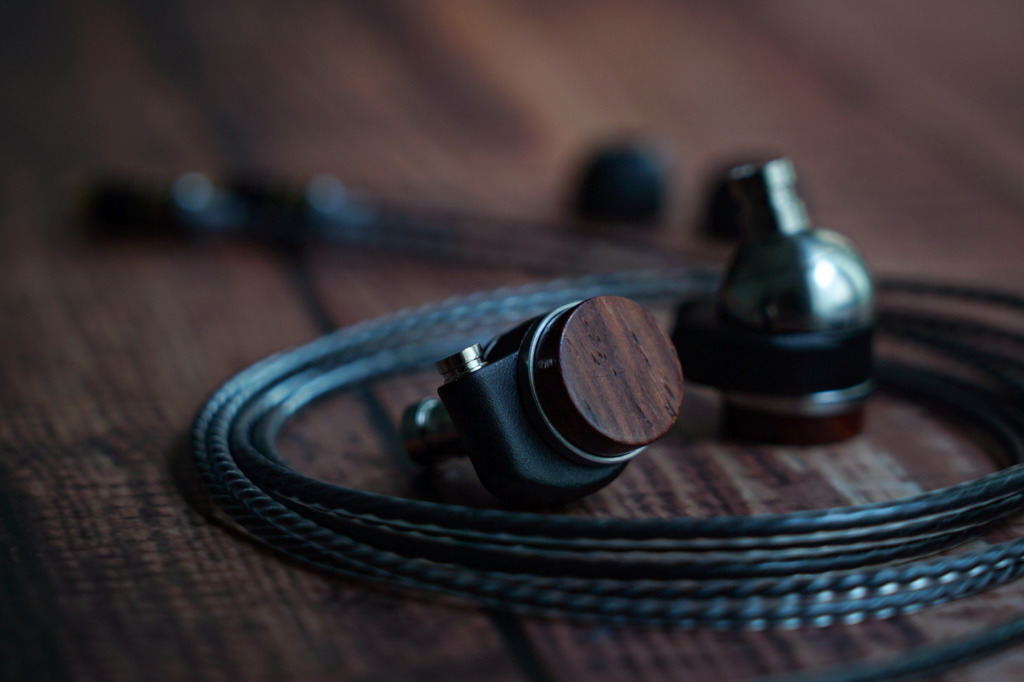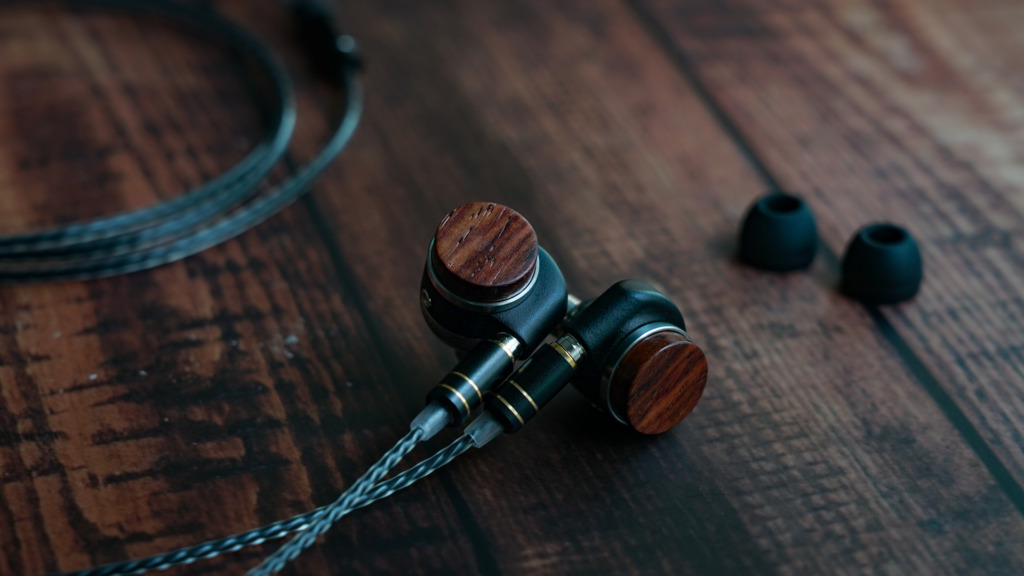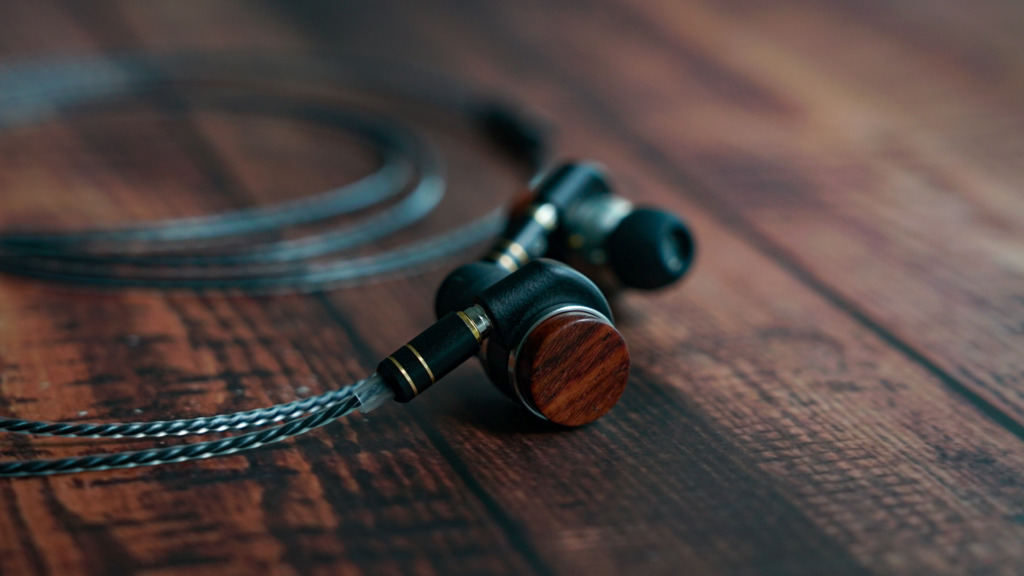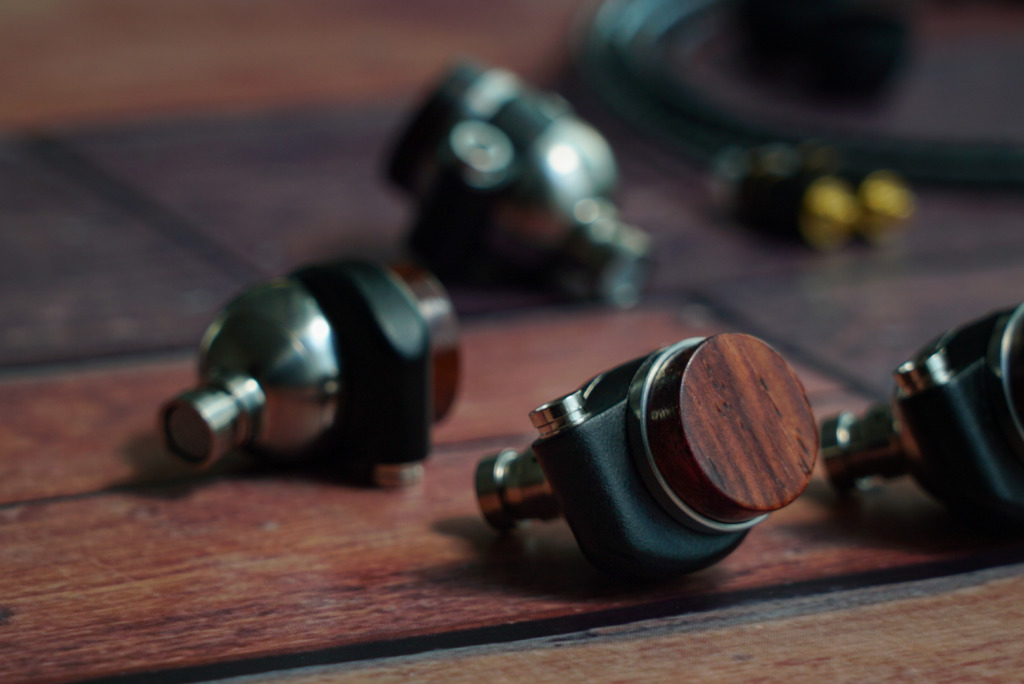LOAK2(CL) has been released. Information about the product is available on the 634EARS product page (link provided below), so in this blog, we’d like to delve into the details of LOAK2(CL), compare its sound to other models, and explain the wood materials used in the rear housing.
Details of LOAK2(OP)
LOAK2(CL)はMIROAK-IIの上位機種モデルという位置づけのイヤホンです。
Housing:
The housing configuration is also detailed on the LOAK2 page of our website, but it consists of the following components:
Front Housing: Titanium
Body Housing: Stainless Steel (with resin only in the MMCX section)
Rear Housing: Various types of wood, stainless steel, brass, copper.
Both titanium and stainless steel are precision-machined. While we considered 3D printing for the more complex shape of LOAK2, we prioritized precision machining for higher build quality compared to previous LOAK models.
The front housing is similar in shape to the old LOAK, but with a slightly different internal structure. We’ve incorporated thin stainless steel in the area where the driver is secured. Titanium and aluminum are excellent materials for transmitting sound from the driver to the nozzle tip, but they are less effective at damping the vibrations of dynamic drivers. By integrating stainless steel into the driver’s contact area, we effectively dampen the vibrations of the dynamic driver, resulting in powerful bass and a clean sound.
The MMCX section is designed to extend from the housing not directly related to sound. On the driver’s rear side, a combination of metal and wood is used to adjust the movement of the diaphragm. This unique structure is produced using resin material via 3D printing due to its specialized nature.
The diaphragm of the dynamic driver is now made of carbon material. It is rigid but responds well to deformation and can move quickly and significantly. The result is quick response, sharp and accurate sound, and a wide dynamic audio range.


Sound Quality
The sound is based on the previous LOAK-TC model and resembles the audio of MIROAK-II’s superior model. It features delicate and sharp mid to high frequencies while delivering a substantial and dynamic low-end response. This tuning also incorporates 634EARS’ past models that aimed to align the top-end of the bass and high frequencies.
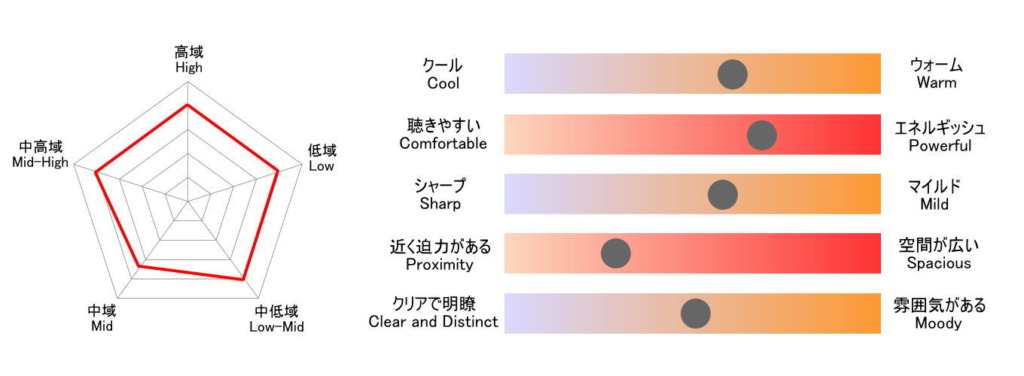
Comparison with Previous Models :
Although LOAK-TC is its foundation, the sound of LOAK2(CL) is a little tighter and has a stronger attack in the high frequency range. However, compared to its predecessor, LOAK-T (CL), for example, it has a slightly thicker and milder sound quality.
Comparison with LOAK2(OP) :
LOAK2(CL)は、LOAK2(OP)よりもやや厚みのある音で、距離感が近い。LOAK2(OP)の開放感や広がりには欠けるが、それを補って余りあるふくよかでエネルギッシュな力強さがある。
Comparison with PROTOTYPE :
Among the PROTOTYPE series, especially PROTOTYPE01(LP01) shares a bit of similarity in sound with LOAK2(CL) since their driver units have the same tuning. LP01 has a resonant quality and a slightly lighter character, whereas LOAK2(CL) presents a more serious and denser sound. You might notice that LOAK2(CL) has a bit more bass. Furthermore, LP01’s bass possesses a touch of elasticity and contour, whereas LOAK2(CL) features a slightly firmer and more forceful sound. In terms of sound contour, LOAK2(CL) has a bit thicker and stronger one compared to LP01.
The other PROTOTYPE models, such as LP02 and LP03, exhibit even thicker, warmer, and more leisurely sounds, making them distinctly different from LOAK2(CL). Within the LOAK series, LP03 offers the most substantial bass, followed by LOAK2(CL) with a notable bass presence.
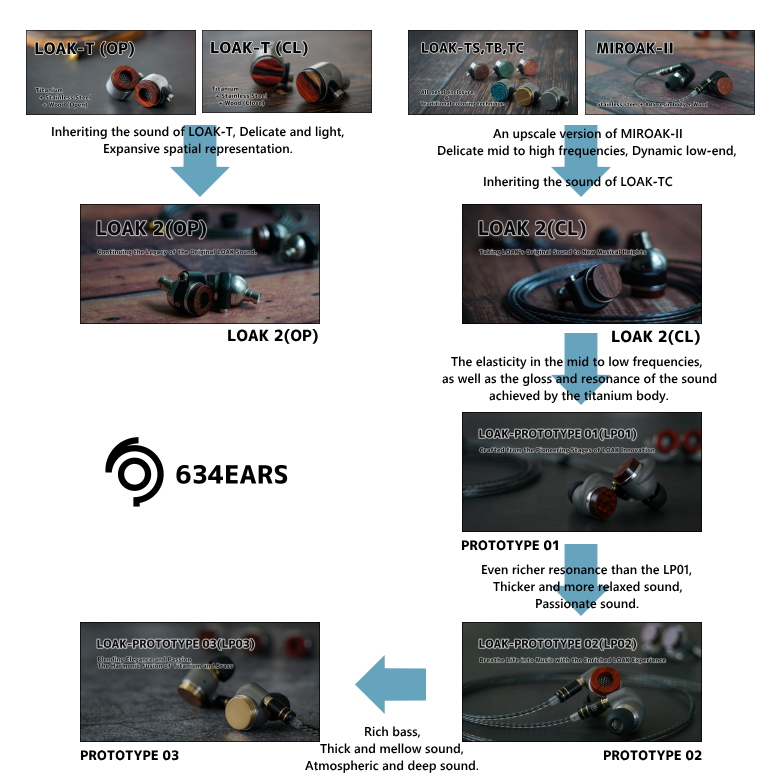
About the Wood Material for the Rear Housing :
This model showcases significant differences in sound attributed to the rear housing’s wood and metal material types compared to the open-back LOAK2(OP). Nevertheless, regardless of the chosen material, LOAK2(CL) retains a consistent sound, and the differences are not substantial enough to turn it into another model. However, when comparing them side by side, you can discern slight distinctions in the sound.
If you prefer a tight and crisp sound, I recommend using hard, high-density wood. Materials like Ebony or harder would be suitable for this.
On the other hand, if you want a slightly mellower sound, opt for wood that isn’t excessively hard. Rosewood or softer wood materials would be preferable.
For a more lightweight and slim sound, choose materials that are hard but not exceedingly dense (materials with hardness relative to their density). For example, Padauk falls into this category.
I created LOAK2(CL) using Indian Rosewood. It has a standard hardness and density, offering a touch of warmth and mellowness, balanced out.
Metal materials can also be selected, as well as colored metal from Momentum Factory – Orii. The metal is processed a little thinner than wood and is hollow in the center to reduce weight. The hollowed out area is placed with a highly resilient material. This process is a countermeasure to the problem that solid metal becomes too heavy and rigid, resulting in a hard sound. The highly resilient material placed in the center softens excessive rebound. As a result, despite the strong rebound caused by the rigid metal, the diaphragm does not become too tight and moves moderately, resulting in a dynamic and voluminous sound.


